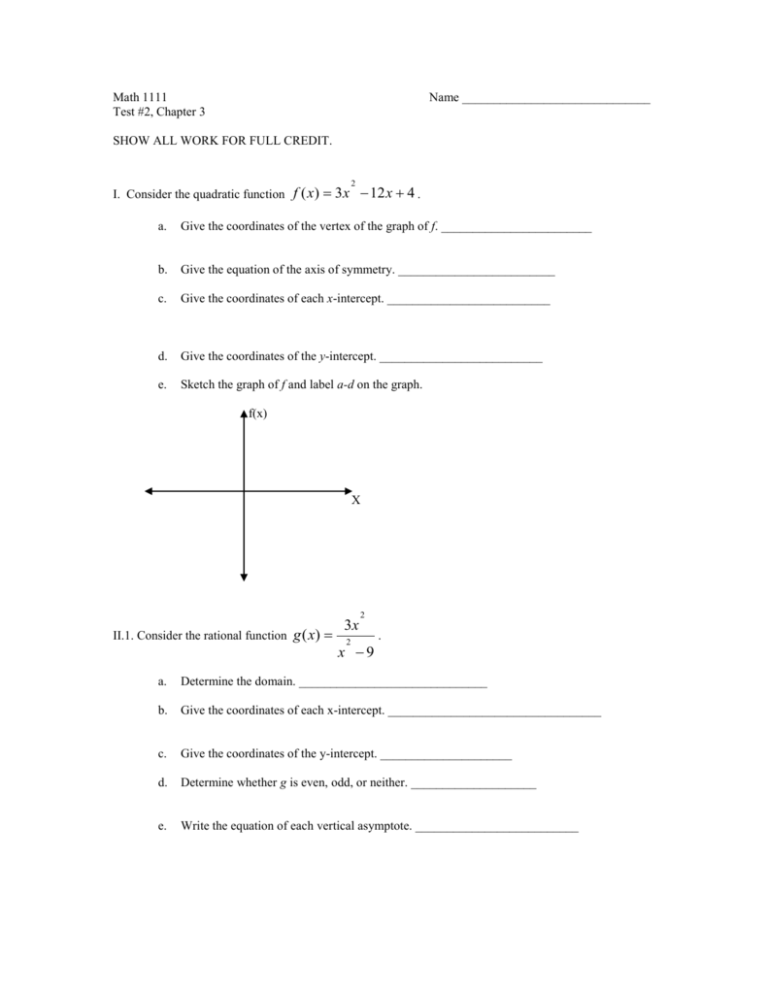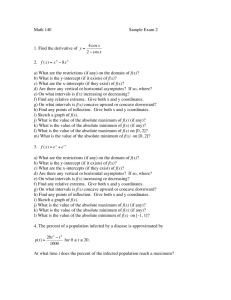Math 1111 Test #2: Quadratic, Rational, & Polynomial Functions
advertisement

Math 1111 Test #2, Chapter 3 Name ______________________________ SHOW ALL WORK FOR FULL CREDIT. 2 I. Consider the quadratic function f ( x) 3 x 12 x 4 . a. Give the coordinates of the vertex of the graph of f. ________________________ b. Give the equation of the axis of symmetry. _________________________ c. Give the coordinates of each x-intercept. __________________________ d. Give the coordinates of the y-intercept. __________________________ e. Sketch the graph of f and label a-d on the graph. f(x) X II.1. Consider the rational function g ( x) 3x 2 2 x 9 . a. Determine the domain. ______________________________ b. Give the coordinates of each x-intercept. __________________________________ c. Give the coordinates of the y-intercept. _____________________ d. Determine whether g is even, odd, or neither. ____________________ e. Write the equation of each vertical asymptote. __________________________ f. g. Write the equation of each horizontal or oblique asymptote and give the coordinate pairs of each, if any, point where the graph intersects it. ____________________________________ Determine the intervals where the graph is above and where it is below the x-axis. ___________________________________________________________ h. Sketch the graph of g. g(x) X 2 2 x 8 x 10 2. Consider the rational function: h( x) . x3 a. Find and list the horizontal/oblique asymptotes _______________________________ b. Find and list the vertical asymptotes ______________________________ c. Find and list the x and y-intercepts ____________________________ III. Consider the polynomial function f ( x) 3 x x 3 x 1 . 2 a. Find the x and y intercepts of f ____________________________ b. Determine whether the graph of f crosses or touches the x-axis at each intercept _________________________________________________________ IV. c. Find the power function that the graph of f resembles for large values of x ____________ d. Determine the maximum number of turning points on the graph of f __________ e. Graph f using intervals (x-intercepts as endpoints of the intervals) A. Find all the zeros (real and complex) of the given polynomial. Use the zeros to factor f over the real numbers. 3 2 f ( x) x 3x 6 x 8 B. Find a polynomial of degree three with zeros of -3 and 1+ i. V. Write each expression in standard form a. 6 3i 2 2i a bi . b. 1 i 2 VI. Solve the equation in the complex number system. 4 2 x 8x 9 0 Bonus: What is the maximum number of squares in this figure? c. i 13











